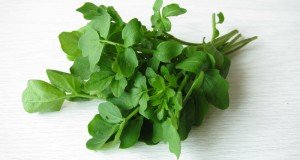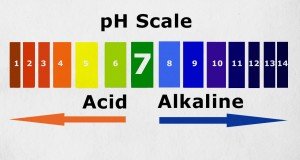Can gratitude heal disease?
(NaturalHealth365) For years, the only studies being done on the relationship between the emotions and physical health had to do with negative ones such as anger, fear and hopelessness. In recent years, however, there has been a flood of studies that have focused on the other side of the coin – how positive emotions, and especially feelings of gratitude, can have an effect on the body and on physical health.
The results of these studies point to a clear connection between the cultivation of positive emotional states and healing from and surviving major illness, including cancer.
What research says about positive emotions
There were less than two dozen scientific studies about the effects of gratitude on physical health coming into the second millennium. By 2011, there were over 150. The surge has to do with developments in the fields of positive psychology and neuropsychoimmunology and represents only a fraction of the research being conducted on the emotion-body connection today.
Neuropsychoimmunologist and molecular biologist Candace Pert, PhD, explains in her book Molecules of Emotion: The Science behind Body-Mind Medicine, how lignans and receptor sites in the brain work together through peptides to form specific physical responses to emotionally-charged stimuli:
“…A chain reaction of biochemical events is initiated as tiny machines roar into action and, directed by the message of the ligand, begin any number of activities – manufacturing new proteins, making decisions about cell division, opening or closing ion channels, adding or subtracting energetic chemical groups such as the phosphates – to name just a few. In short, the life of the cell, what it is up to at any moment, is determined by which receptors are on its surface, and whether those receptors are occupied by ligands or not. On a more global scale, these minute physiological phenomena at the cellular level can translate to large changes in behavior, physical activity, even mood.”
How emotions stir up body chemistry and affect our health
It is easy to visualize the real-time outcome of all this microscopic hubbub when one is face to face with a bear in the woods or the tirades of a difficult boss. The body stiffens, the mind narrows and focuses in on the perceived danger and the limbic brain signals the production of adrenaline and cortisol, producing the flight-or-fight response.
But what happens when positive emotions occur? Research around the chemistry of emotions such as joy, love and gratitude is still in its infancy, but many experts suspect that the chain-reaction of events created by positive emotions still spurs from chemical interactions in the limbic brain, albeit in slightly different locations than with negative emotions.
Positive emotions release substances such as dopamine and oxytocin which produce what social psychologist Barbara Frederickson calls the “broaden and build theory” of positive emotions. With positive emotions, instead of narrowing thoughts and stiffening bodily reactions, there is a broadening and expanding on all levels. The mind opens to greater possibilities. The immediate physical effects of this expansion include changes in breathing patterns and pulse as well as a balancing out of hormone levels and blood pressure.
How exactly does gratitude help us heal the body?
Fredrickson says that emotions such as gratitude can effect individuals in the moment – such as helping the mind discover creative options to a real-time situation and bodily regulations in blood pressure – as well as into the future. The long-lasting effects of positive emotions happen in a building-block sort of way: joy can lead to openness to others; interest can lead to exploration and personal growth; love can lead to closer relationships, and so on.
On the physical level, positive emotions may create increased balance on all levels, which can lead to higher tolerance to infection, higher immune system function, lower systemic inflammation and, ultimately, increased survivability when it comes to major illnesses such as cancer.
Here is just a small sampling of studies done in 2015 alone in the field of positive emotion and major illness:
- A study conducted through the University of Missouri- Columbia contacted breast cancer survivors 30 months after post-treatment. They found that “themes central to long-term survivorship experiences included social support, positive worldviews, breast cancer and lymphedema health literacy, religious/spiritual beliefs, self-empowerment, and recovery expectations. These themes were consistent with a psychoneuroimmunological model of health in which psychosocial variables mediate stress and influence health outcomes.”
- A study conducted by the Tumor Center at the University of Regensburg in Regensburg, Germany analyzed the subjective experience of breast cancer survivors in Bavaria, Germany seven years after the fact. 42% of the respondents indicated that thinking positive and a “fighting spirit” was the most important advice they would give other breast cancer patients.
- A study conducted by Capitol Medical University in Beijing, China found a “significant relationship between positive emotions, blood pressure regulation among elderly people with cardiovascular disease.”
- A report published in the journal of the American Psychological Association and conducted by the UC San Diego Center for Excellence for Research and Training in Integrative Health and the Chopra Foundation found that patients who displayed more outward tendencies towards gratitude slept better, had less fatigue, were less prone to depression and experienced less systemic inflammation.
As the research into the connection between positive emotions and health continues, there is mounting evidence that this connection is real and can possibly even save lives. Every positive thought can be a step towards health and a vibrant life. How will you include the power of positive thinking, and especially gratitude, into your daily healthy breast routine?
About the author:Dr. Veronique Desaulniers (“Dr. V”) is a best-selling author and specialist in Chiropractic, Bio-Energetics, Meridian Stress Analysis, Homeopathy and Digital Thermography. After 30 years in active practice, she decided to “retire” and devote her time to sharing her personal, non-toxic Breast Cancer healing journey with others. Her years of experience and research have culminated in “The 7 Essentials™ “, a step-by-step coaching program that unravels the mystery of healing the body. Her website and personal healing journey have touched the lives of thousands of women around the globe. To get your F.R.E.E. 7-day mini e-course and to receive her weekly inspiring articles on the power of natural medicine – visit: BreastCancerConqueror.com
References:
https://www.ncbi.nlm.nih.gov/pubmed
https://positivepsychologyprogram.com/understanding-developing-positive-emotions
https://en.wikipedia.org/wiki/Fight-or-flight_response
https://www.ncbi.nlm.nih.gov/pmc/articles/PMC1693418
https://hbr.org/2014/06/the-neurochemistry-of-positive-conversations
https://gruberpeplab.com/teaching/psych231_fall2013/documents/231_BurgdorfPanksepp2006.pdf
https://positivepsychologyprogram.com/understanding-developing-positive-emotions
https://europepmc.org/abstract/MED/26030800
https://www.biomedcentral.com/1471-2407/15/554
https://www.choprafoundation.org/wp-content/uploads/2015/08/SCP-Artcile.pdf
https://www.ncbi.nlm.nih.gov/pmc/articles/PMC4509151
https://greatergood.berkeley.edu/author/Robert_Emmons











